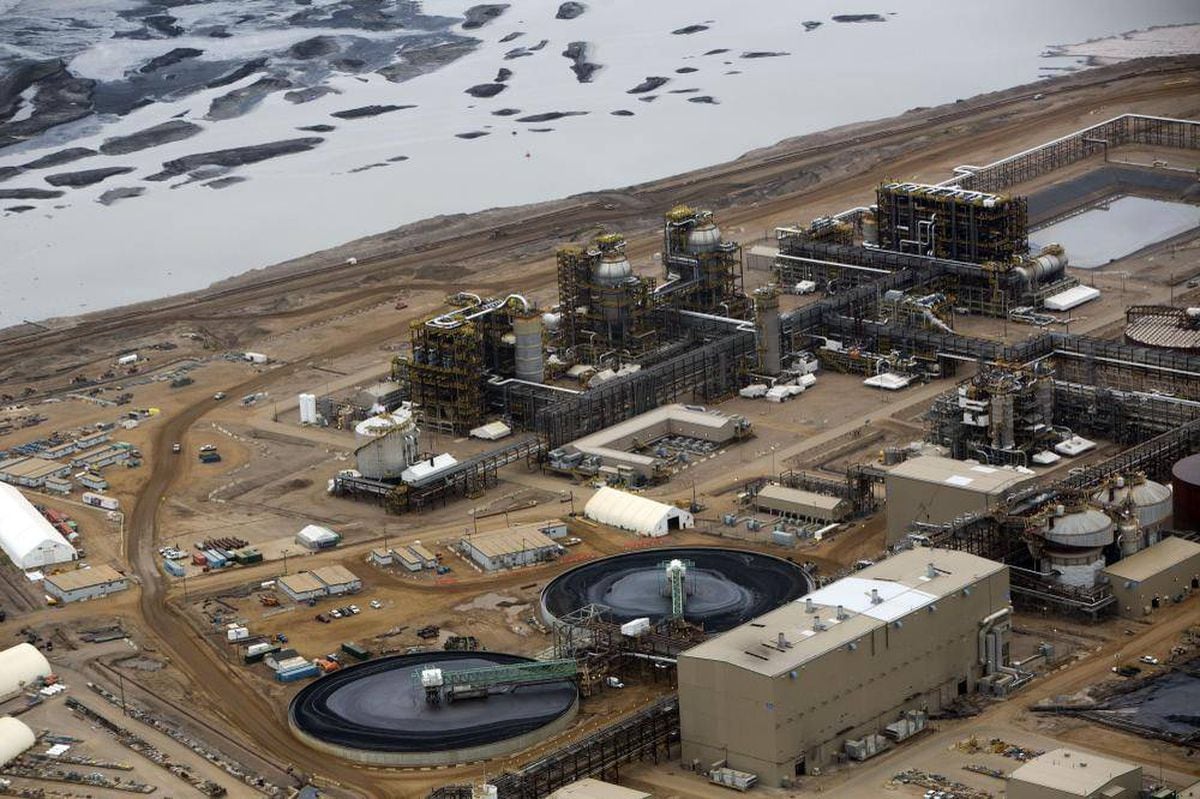The Impact Of Tariffs: Dow's Delayed $9 Billion Alberta Project

Table of Contents
The Original Project Scope and Projected Economic Benefits
Dow's planned petrochemical complex in Alberta was envisioned as a transformative project, poised to significantly boost the province's and Canada's economy. Located strategically near existing energy resources, the project aimed to leverage Alberta's abundant natural gas reserves to produce ethylene and polyethylene, key building blocks for plastics and other petrochemical products.
- Projected job creation: The project promised thousands of jobs during the construction phase and an additional several thousand permanent operational roles. These opportunities extended beyond direct employment with Dow, encompassing jobs in supporting industries and services.
- Estimated economic output and spin-off effects: Independent economic analyses predicted a substantial increase in Alberta's GDP, fueled not only by Dow's direct operations but also by the multiplier effect on related businesses. This included increased activity in transportation, logistics, and manufacturing.
- Planned integration with existing Alberta energy resources: The project's design emphasized utilizing Alberta's natural gas resources, contributing to the province's energy diversification strategy and reducing reliance on single-industry economic drivers. This integration was expected to create a more robust and resilient economic ecosystem.
- Expected contribution to Canada's GDP: The project was anticipated to contribute significantly to Canada's overall GDP, boosting national economic growth and enhancing Canada's competitiveness in the global petrochemical market.
The Role of Tariffs in Dow's Decision to Delay
The decision to delay the project was directly linked to uncertainties and the substantial impact of tariffs on Dow's cost calculations and profitability projections. The fluctuating trade environment, particularly between the US and Canada, introduced significant risks.
- Specific tariffs on raw materials or finished goods: Tariffs imposed on both raw materials needed for production and the finished petrochemical products intended for export significantly increased the project's cost structure. These fluctuating tariffs created unpredictable expense variability.
- Impact on import/export costs for Dow's operations: The cost of importing equipment and exporting finished goods fluctuated dramatically, making accurate long-term financial planning incredibly challenging for Dow. These unforeseen costs threatened the project's financial viability.
- Uncertainty surrounding future tariff changes: The lack of clarity regarding future tariff policies created significant uncertainty and risk. Dow needed long-term stability to justify the substantial investment required for such a large-scale project.
- Increased complexity and costs associated with navigating trade regulations: The ever-changing landscape of trade regulations added substantial administrative and compliance costs. Navigating the complexities of multiple tariffs and trade agreements significantly impacted the project's feasibility.
Impact on Competitiveness
Tariffs also significantly affected Dow's competitive positioning. The company had to consider alternative locations for the project, including sites within the United States.
- Comparison with potential locations in other countries (e.g., the US): The imposition of tariffs made the Canadian location less competitive compared to potential sites in the US, where tariff burdens might be lower or more predictable. This comparative analysis highlighted the significant impact of unpredictable trade policies on investment decisions.
- Analysis of the impact of tariffs on the price of feedstocks and energy: Tariffs directly impacted the price of feedstock materials and energy inputs, increasing production costs and eroding the project's profitability. This heightened the risk associated with building the plant in Canada.
- Consideration of alternative markets for Dow's products: Tariffs on exported products reduced the potential market for Dow's output, impacting the long-term return on investment and making the Canadian location less attractive.
Political and Economic Implications of the Delay
The delay of Dow's project carries significant political and economic consequences.
- Impact on investor confidence in Canada's energy sector: The decision sent a negative signal to potential investors, raising concerns about the stability and predictability of Canada's regulatory and trade environment, particularly within the energy sector. This negatively impacts future investment opportunities.
- Political fallout and implications for trade negotiations: The delay has implications for Canada-US relations and ongoing trade negotiations. The situation underscores the importance of stable and predictable trade policies for fostering a positive investment climate.
- Job losses and economic repercussions in Alberta: The project's delay resulted in significant job losses, both directly and indirectly, leading to economic repercussions in Alberta. This has far-reaching consequences for the local community and the provincial economy.
- Loss of potential tax revenue for governments: The project's postponement resulted in a loss of potential tax revenue for both provincial and federal governments, impacting public services and infrastructure development.
Potential Mitigation Strategies and Future Outlook
To mitigate the negative impacts of tariffs on future large-scale projects, several strategies are crucial.
- Improved trade agreements and strengthened bilateral relationships: Strengthening trade agreements and fostering stronger bilateral relationships with key trading partners can help minimize trade barriers and create more stable and predictable trade environments.
- Government incentives and support for large-scale projects: Governments can provide incentives and support packages to attract and retain large-scale projects, offsetting some of the costs and risks associated with tariffs and other trade barriers.
- Diversification of markets and reduction of reliance on specific trade partners: Diversifying markets and reducing reliance on specific trade partners can help mitigate the impact of tariffs imposed by any single country.
- Strategies to reduce reliance on tariff-sensitive inputs: Exploring alternative inputs or production methods that reduce reliance on tariff-sensitive materials can help enhance the resilience of large-scale projects.
Conclusion
The delay of Dow's $9 billion petrochemical project serves as a stark reminder of the substantial influence tariffs can exert on major investment decisions. The case underscores the critical need for stable and predictable trade policies to foster economic growth and attract foreign investment. Uncertainty surrounding tariffs created significant risks, impacting Dow's competitiveness and ultimately leading to the project's postponement. This highlights the importance of considering the full impact of tariffs on large-scale projects and the need for proactive mitigation strategies.
Understanding the far-reaching impact of tariffs, as demonstrated by Dow's delayed project in Alberta, is crucial. Policymakers must prioritize creating a stable and predictable trade environment to attract investment and drive economic growth. Further research and analysis of the impact of tariffs on similar large-scale projects are needed to inform future trade policies and mitigate the negative consequences of protectionist measures. Let's work towards smarter trade policies that minimize the impact of tariffs and promote long-term economic prosperity.

Featured Posts
-
 Jeff Goldblum Reveals A Surprising Life Experience Hes Missed
Apr 29, 2025
Jeff Goldblum Reveals A Surprising Life Experience Hes Missed
Apr 29, 2025 -
 Russias Ukraine Offensive North Korean Troop Deployment Confirmed
Apr 29, 2025
Russias Ukraine Offensive North Korean Troop Deployment Confirmed
Apr 29, 2025 -
 Adhd Og Skoleprestasjoner Nar Medisin Ikke Er Nok
Apr 29, 2025
Adhd Og Skoleprestasjoner Nar Medisin Ikke Er Nok
Apr 29, 2025 -
 Activision Blizzard Merger Ftcs Appeal Against Court Ruling
Apr 29, 2025
Activision Blizzard Merger Ftcs Appeal Against Court Ruling
Apr 29, 2025 -
 Sub Saharan Africa Faces Pw C Departure Challenges And Opportunities
Apr 29, 2025
Sub Saharan Africa Faces Pw C Departure Challenges And Opportunities
Apr 29, 2025
